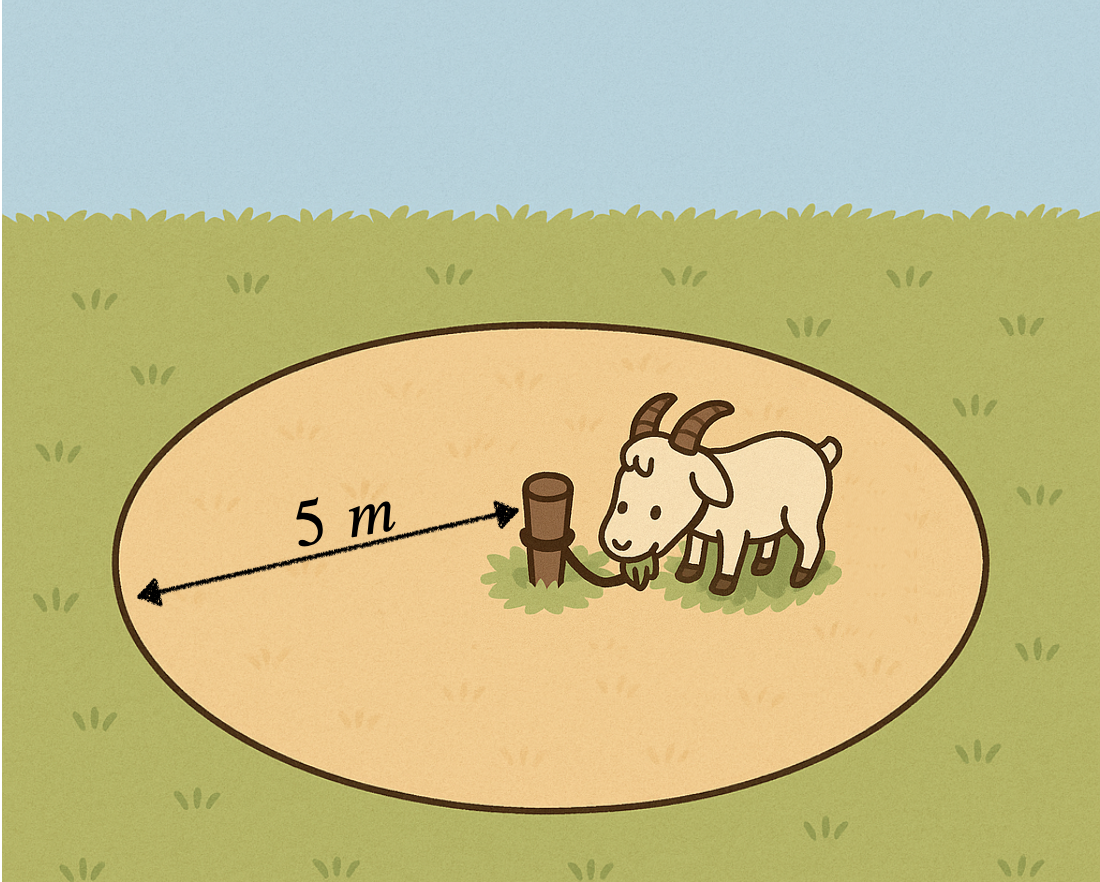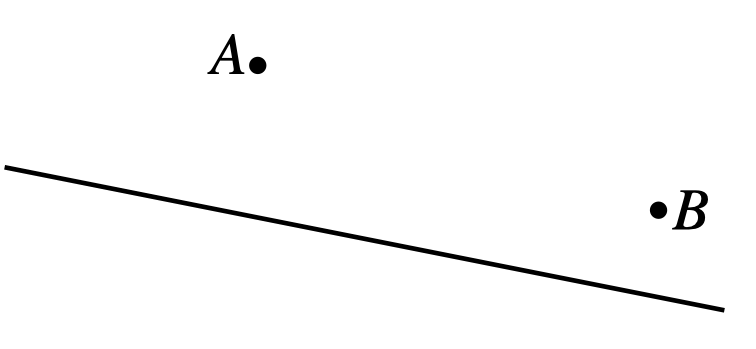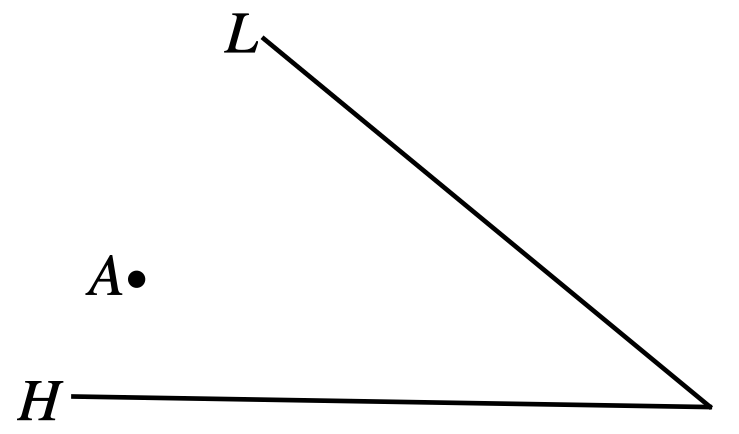Problems
When Robinson Crusoe was stranded on his island, he found a goat and decided to keep it. To stop the goat from running away, he tied it to a peg in the ground with a rope. The goat wandered around happily, eating all the grass it could reach until the rope pulled tight. For example, Robinson noticed that with just one peg and one rope of length \(5\) meters, the grazed area was exactly a circle of radius \(5\) meters!

In this sheet we will explore what shapes the goat can graze when Robinson uses pegs, ropes, and even small sliding rings in slightly more complicated positions. In mathematics, the shape made by all points that satisfy a condition is called a locus (plural: loci). In our problems, the locus of the goat is the area it can graze. Before we begin, here are the rules of the game:
We will treat the goat as a single point, and the rope as a fixed length that cannot stretch, so the goat can graze any point it can reach before the rope is tight. A peg is simply a point in the ground that does not move. Let’s see some more interesting examples:
There are \(57\) buttons placed evenly around a circle, each with a light underneath it. Pressing a button changes the state of its own light and also the lights under its two neighbouring buttons. Changing state means that a light which is on becomes off, and a light which is off becomes on. If all the lights start off, what is the smallest number of presses that need to be done so that the entire circle lights up?
Lena lays out a big square blanket that is \(1\) meter on each side. She has a pile of small square tiles, and their total area is \(100\,\text{m}^2\). She wants to place all the tiles on the blanket so that none of them overlap and none hang over the edge. Can she do it?
Without using any wolves, show that Robinson’s goat can only graze shapes that are convex (that means, whenever you pick two points inside the shape, the whole line between them also lies inside). But if Robinson is allowed to use as many wolves as he likes, this restriction disappears. Show that in this case, he can make the goat graze in the shape of any polygon at all.
In a field, there are two pegs, \(A\) and \(B\), placed \(15\) metres apart. Each peg has a small
ring on top, and a rope can slide freely through these rings.
You have one rope and two goats that want to graze the grass, but they
will fight each other if they can both reach the same spot.
The rope may be arranged in any way you choose: it could pass through
both rings, only one, or neither, depending on your setup.
For what lengths of rope can you arrange things so that the goats cannot
fight each other?
Long before meeting Snow White, the seven dwarves lived in seven different mines. There is an underground tunnel connecting any two mines. All tunnels were separate, so you could not start in one tunnel and somehow end up in another. Is it possible to walk through every tunnel exactly once without retracing your path?
There is a queue of \(n\) truth tellers and liars. The first person says, “more than half of us are liars". The second person says, “more than a quarter of us are liars". The third person says, “more than an eighth of us are liars", and so on, until the \(n\)th person says, “more than \(\frac{1}{2^n}\) of us are liars". Describe what the number of truth-tellers and liars could be, as well as their placement in the queue. Note that the solutions are not fixed numbers.
Fred starts running from point \(A\) and must reach point \(B\). On the way, he has to touch the fence shown as a straight line in the figure. It doesn’t matter where he touches the fence, as long as he does. What is the shortest path he can take?

Robbie and Paloma are playing football on a large, flat field. They both run at the same speed toward the ball. Where could the ball have been if Paloma reached it first?
Oliver starts running from point \(A\) in the figure below. He must touch line \(H\), and then line \(L\). What is the shortest path he can take?
